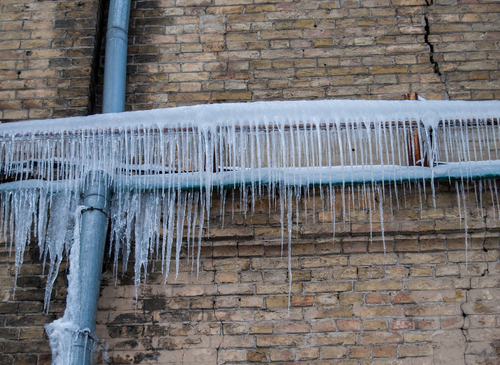Avoiding Frozen Plumbing: Top Strategies for Winter
Avoiding Frozen Plumbing: Top Strategies for Winter
Blog Article
What're your ideas about How to prepare your home plumbing for winter weather?

Cold weather can damage your pipes, specifically by freezing pipes. Right here's how to stop it from taking place and what to do if it does.
Introduction
As temperatures drop, the threat of icy pipelines rises, possibly bring about expensive repair work and water damages. Recognizing exactly how to avoid frozen pipelines is critical for house owners in cold climates.
Understanding Frozen Pipes
What triggers pipes to ice up?
Pipes ice up when exposed to temperatures listed below 32 ° F (0 ° C) for prolonged periods. As water inside the pipelines freezes, it increases, putting pressure on the pipe walls and possibly creating them to burst.
Threats and damages
Frozen pipes can result in supply of water disruptions, property damages, and expensive repair services. Ruptured pipelines can flood homes and cause comprehensive structural damage.
Indicators of Frozen Pipeline
Determining frozen pipelines early can avoid them from breaking.
Just how to recognize icy pipelines
Look for decreased water flow from faucets, uncommon smells or sounds from pipes, and noticeable frost on revealed pipelines.
Prevention Tips
Insulating susceptible pipelines
Wrap pipelines in insulation sleeves or use warm tape to protect them from freezing temperature levels. Focus on pipelines in unheated or exterior areas of the home.
Home heating strategies
Maintain interior spaces appropriately heated, particularly areas with pipes. Open up cupboard doors to allow cozy air to circulate around pipelines under sinks.
Safeguarding Outdoor Pipes
Garden tubes and exterior faucets
Separate and drain pipes garden pipes before winter season. Install frost-proof faucets or cover outside faucets with shielded caps.
What to Do If Your Pipelines Freeze
Immediate actions to take
If you suspect icy pipes, maintain faucets open up to eliminate pressure as the ice thaws. Utilize a hairdryer or towels taken in hot water to thaw pipelines slowly.
Long-Term Solutions
Architectural modifications
Consider rerouting pipes far from exterior walls or unheated locations. Add added insulation to attic rooms, basements, and crawl spaces.
Upgrading insulation
Invest in high-quality insulation for pipes, attics, and wall surfaces. Proper insulation helps preserve consistent temperatures and decreases the danger of icy pipelines.
Verdict
Protecting against icy pipelines needs aggressive steps and fast actions. By recognizing the reasons, indications, and safety nets, property owners can shield their plumbing during cold weather.
5 Ways to Prevent Frozen Pipes
Drain Outdoor Faucets and Disconnect Hoses
First, close the shut-off valve that controls the flow of water in the pipe to your outdoor faucet. Then, head outside to disconnect and drain your hose and open the outdoor faucet to allow the water to completely drain out of the line. Turn off the faucet when done. Finally, head back to the shut-off valve and drain the remaining water inside the pipe into a bucket or container. Additionally, if you have a home irrigation system, you should consider hiring an expert to clear the system of water each year.
Insulate Pipes
One of the best and most cost-effective methods for preventing frozen water pipes is to wrap your pipes with insulation. This is especially important for areas in your home that aren’t exposed to heat, such as an attic. We suggest using foam sleeves, which can typically be found at your local hardware store.
Keep Heat Running at 65
Your pipes are located inside your walls, and the temperature there is much colder than the rest of the house. To prevent your pipes from freezing, The Insurance Information Institute suggests that you keep your home heated to at least 65 degrees, even when traveling. You may want to invest in smart devices that can keep an eye on the temperature in your home while you’re away.
Leave Water Dripping
Moving water — even a small trickle — can prevent ice from forming inside your pipes. When freezing temps are imminent, start a drip of water from all faucets that serve exposed pipes. Leaving a few faucets running will also help relieve pressure inside the pipes and help prevent a rupture if the water inside freezes.
Open Cupboard Doors
Warm your kitchen and bathroom pipes by opening cupboards and vanities. You should also leave your interior doors ajar to help warm air circulate evenly throughout your home.
:strip_icc()/snow-outdoor-faucet-pipes-4af65d1e5e904fb1aa7bf74071fe5d89.jpg)
I have been very eager about 6 Ways to Prevent Frozen Pipes and I really hope you appreciated our blog posting. Sharing is caring. You just don't know, you could be helping someone out. I truly appreciate your readership.
Call Today Report this page